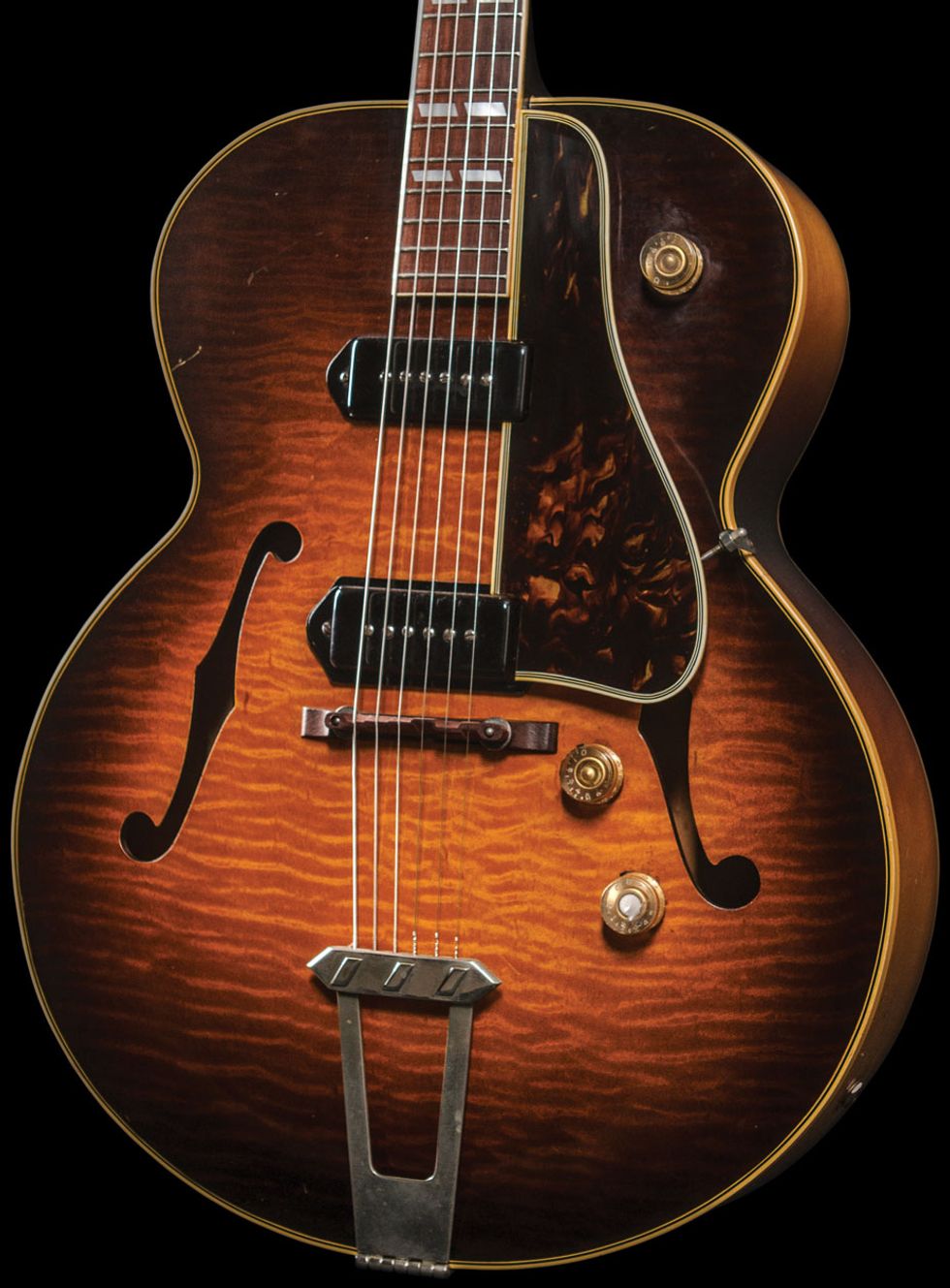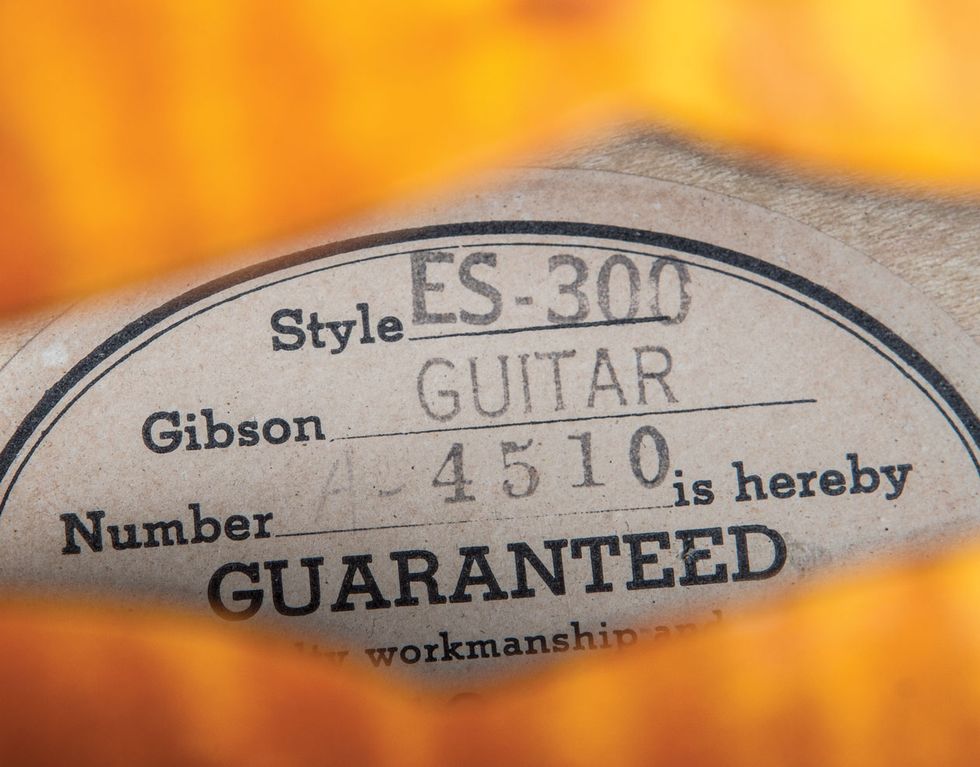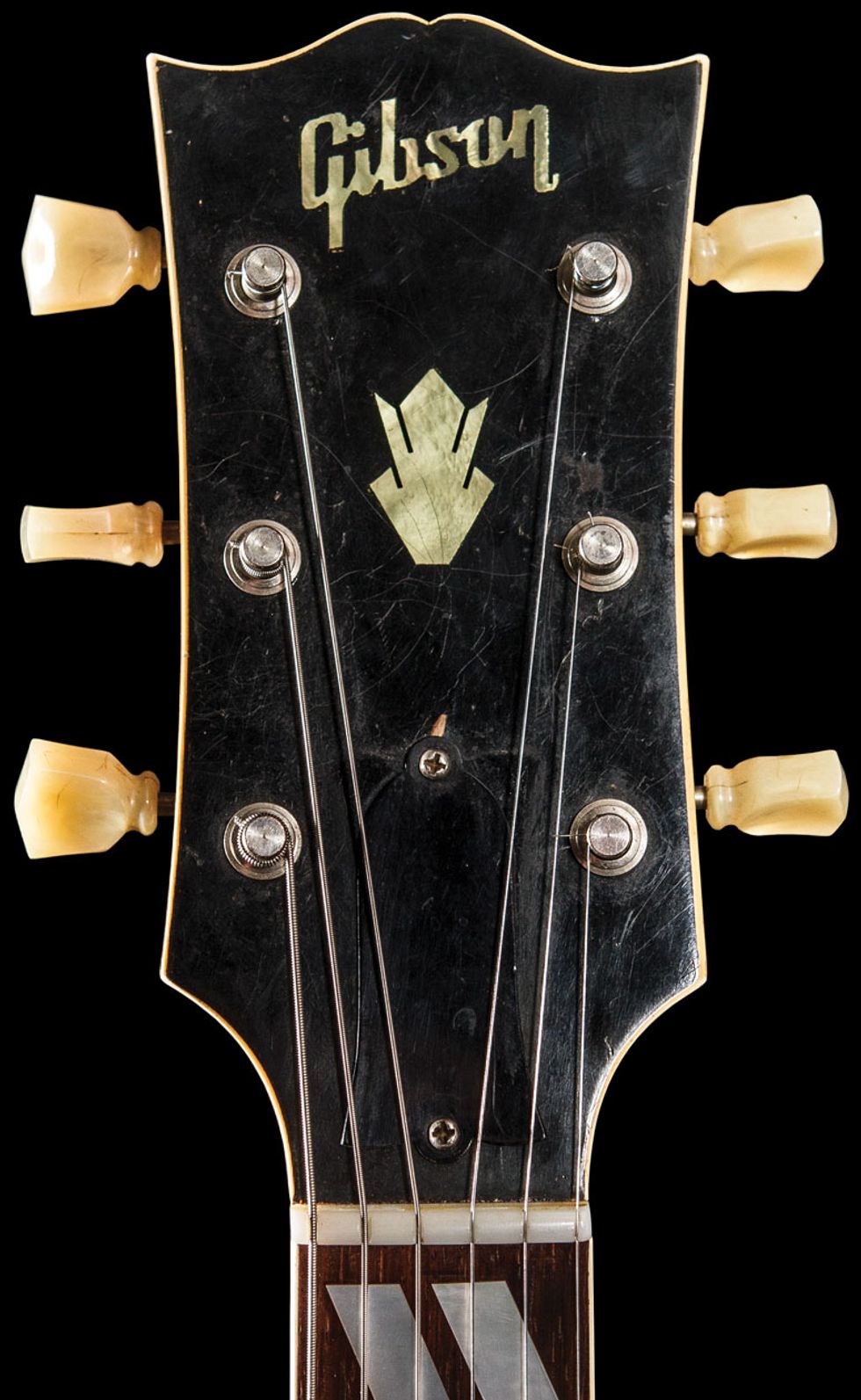Gibson introduced its first Electric Spanish guitar, the ES-150, in 1936. (The company’s first electric Hawaiian guitar had been unveiled a year earlier). The ES-150 was a 16”-wide archtop acoustic adapted with a bar pickup on the top near the fretboard. The model proved successful enough (504 were shipped in 1937) that Gibson expanded their electric offerings to include the smaller ES-100 in 1937 and the more ornate 17”-wide ES-250 after 1938.
In 1940, the ES-250 was replaced by the ES-300. The ES-300 had the same 17”-wide maple body and carved reinforced spruce top as its predecessor, but debuted a new long diagonal pickup. The awkward long pickup was discarded in favor of a shorter but still diagonal one in 1941. The outbreak of World War II in December of that year slowed the production of electrics, and by the summer of 1943 manufacturing was supposedly halted.
This 1950 model sports a 17”-wide body with a laminated maple top, back, and sides; a 1-piece mahogany neck; and a 20-fret bound 25 1/2” scale rosewood fretboard with split parallelogram inlays.
When the war was over, instrument assembly gradually increased. A line of Electric Spanish guitars was reintroduced during 1946, including a modified version of the ES-300. The new edition was made from laminated maple pressed into shape, rather than solid wood. It was decided that carved solid spruce was not necessary for an electric guitar, since the string vibrations were amplified by a pickup. The guitar was initially equipped with one of the newly designed P-90 pickups in the neck position. By 1949, the ES-300 was improved with the addition of a bridge pickup. The popularity of the ES-350 cutaway version introduced in 1947 led to the discontinuation of the ES-300 by the end of 1952.
The manufacturer’s label is still clearly readable inside the body of this guitar, 68 years after it rolled off the assembly line.
The 1949 Gibson electric guitars catalog described the final version of the ES-300: “A moderately priced instrument of professional quality is offered by Gibson in this regular style Electric Spanish Guitar with two unit pickups. An ideal instrument for advanced players, the ES-300 features characteristic Gibson tone and balanced electronic reproduction. Its beautiful appearance is highlighted by decorative accents on the Gibson Golden Sunburst or Natural finishes.”
Like its neck, the headstock of this 1950 ES-300 is also bound, and it displays the classic Gibson logo and a classy pearl crown inlay.
The 1950 ES-300 pictured has all the features common to 1949–1952 versions of this model. These include a 17”-wide body with a laminated maple top, back, and sides; a 1-piece mahogany neck; a 20-fret bound 25 1/2” scale rosewood fretboard with split parallelogram inlays; a bound headstock with a pearl crown inlay; and two P-90 pickups with a separate volume control for each, plus one master tone. The 1950 list price was $235. The current value for one in excellent all-original condition is $3,500.
Sources for this article include Gibson Guitars: 100 Years of an American Icon by Walter Carter, Gibson Electrics: The Classic Years by A.R. Duchossoir, and Gibson Guitars: Ted McCarty’s Golden Era, 1948-1966 by Gil Hembree.










![Rig Rundown: Russian Circles’ Mike Sullivan [2025]](https://www.premierguitar.com/media-library/youtube.jpg?id=62303631&width=1245&height=700&quality=70&coordinates=0%2C0%2C0%2C0)

















